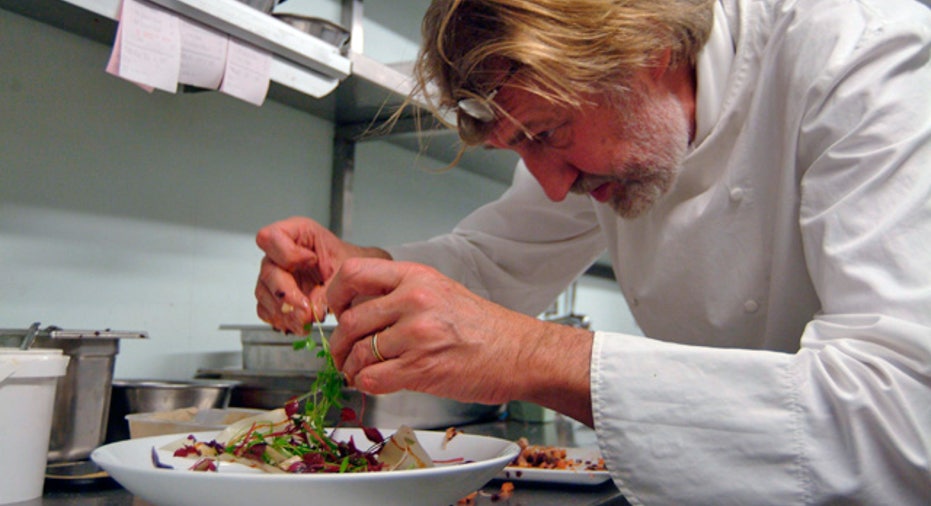Businesses Brace for Rising Food Prices

As world food prices reach record highs, how can small businesses prepare to deal with the impact?
Putting food on the table is getting more expensive by the day. Putting profits on the books is becoming just as challenging for small businesses connected with the food industry.
World food prices are skyrocketing and show no signs of slowing down, according to the United Nation's Food and Agriculture Organization. The group's monthly survey includes a food price index, which averaged 231 points in January — up 3.4 percent since December and the highest since records began in 1990.
But this doesn’t have to spell disaster for restaurants, food suppliers and similar businesses. They can keep customers hungry for more if they take a proactive approach to cost-cutting and other strategies.
Raising prices vs. buying smart
If your first thought for countering higher food costs is to simply raise prices, you're not alone. A recent Nation's Restaurant News survey found some 60 percent of restaurants are planning to hike menu prices in 2011. If that describes you, make sure your customers know that food supply costs are the cause. And, says Chris Dagger of Cakettes Coffee Shop, a Warren, Massachusetts-based chocolatier and bakery, be ready to explain your decision face to face.
"As small-business owners, we're the people serving our customers on a daily basis. I think consumers are happier to complain about price increases simply because they're complaining directly to somebody who has the power to do something about it," he says. "With larger companies and chains, if a customer complains to the staff, it probably won't go any further."
But price increases may not be a fait accompli. Instead, be utterly ruthless in looking to hold the line on expenses through a variety of strategies. One such option is buying locally whenever possible — the "locavore" food trend is directed to supply rather than consumption.
"I use a fair amount of local products for several reasons. Besides being a locally based company interested in my local economy, using local suppliers cuts down on freight costs tremendously," says Mark Alan Mollentine of Chef Mark's Kitchen, a Kansas City, Missouri-area supplier of sauces and spices.
"The rising cost of food is absolutely a big thing, but getting it is another area of cost concern contributing to rising food costs,” he says. “I've also formed alliances with several local farms and farm cooperatives to get some of my products directly from them. I get a better price than buying from a wholesaler or retailer and I get really good quality products."
Additionally, look to leverage bulk purchases at every opportunity, particularly when you can include other businesses in the mix. Mollentine and a number of colleagues have taken the idea a step further by organizing Kansas City Food Artisans, an association geared toward streamlining a variety of operating expenses, from supply purchases to other ongoing costs.
"It's an association of small food manufacturers. We all benefit from joint buys and collective efforts in obtaining products, services and marketing opportunities," says Mollentine.
Cutting costs and eliminating discounts
Still another strategy focuses on production costs. That's one way Cakettes has been able to offset surging supply costs — Dagger estimates a case of butter now costs $100, up from $56 in a span of roughly six months — while allowing the business to grow at the same time.
"Our latest cost-saving scheme is, unconventionally, to open a second coffee shop — a satellite location," he says. "We believe that if it takes us 15 minutes to prepare a batch of 12 muffins to bake, it would only take us an extra five minutes to prepare a batch two or three times the size. That way, the increases in ingredient costs are offset by the reduction in labor costs."
Other strategies:
- Eliminate coupons, discounts and other freebies — an “invisible” way of raising prices.
- Negotiate long-term supply contracts with suppliers at set prices.
- Diversify products and ingredients. When one product’s supply costs spike in price, emphasize other products whose costs are holding steady.
Lastly, don't overlook the value of seemingly small expenses cobbled together to produce significant savings.
"The real key is to work to reduce overhead. Make the building more energy efficient, stop paying a fortune to have the windows cleaned every week when they probably don't need it, and so on," says Dagger. "When you think you've reduced all the overhead to the lowest you possibly can, go back and look again. There are always more reductions."